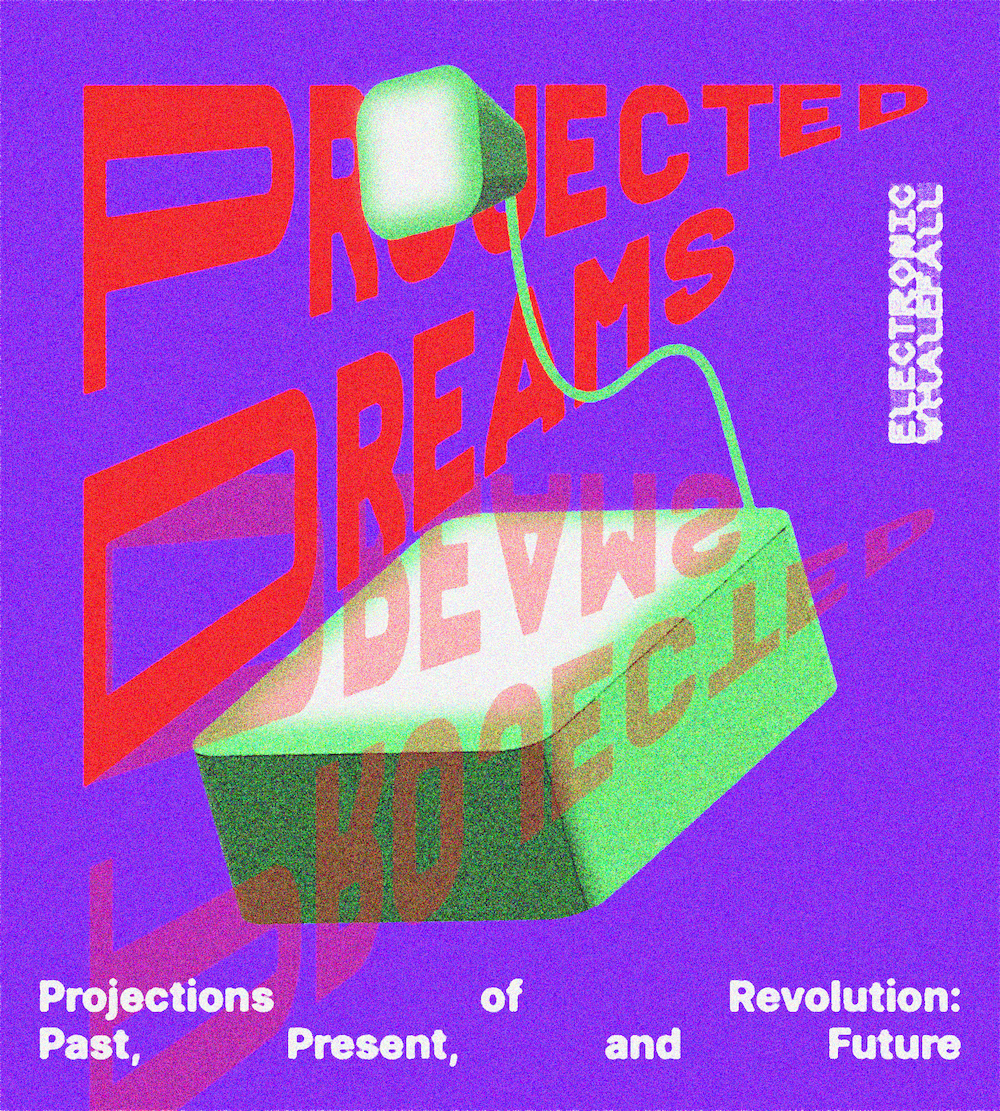| ID | Name | Type |
|---|---|---|
| 43 | Projected Dreams | Event |
Details
The allegory of the cave tells a story of people watching shadows and using that visual information as a way to understand their reality, even if that might not accurately represent reality. Plato tells the allegory as a way to explain how a philosopher's journey is one from seeing the shadows in the cave to breaking free and seeing the real world as it is.
However, who is to say one reality is more true than the other? Say there is a shadow of a wolf, and the shadow cast creates fangs longer than in reality. Who is to say reality is the exact inches of the fangs on the wolf? Perhaps the exaggerated teeth more accurately portrays the terrifying feeling that the fangs come with?
Does the shadow follow or lead? From shadow puppets to mass media, do the art and stories we create document reality or shape it?
In John Abraham's Amma Ariyan (Report to Mother), the main character, Purushan, sets out on a journey to deliver the news of a tragic death to a mother. Along the way, he gathers a movement, which echos both the Naxalite Movement that the film is reflecting on and Odessa, the film collective that director John Abraham founded. Abraham and Odessa would travel from village to village, a 16mm projector in tow, screening films and staging plays, it was a journey in co-creation, these tours were a way to both fundraise and screen, returning production and distribution closer to the people, and closer to the movement.
The beauty of the projector, including the overhead projector, is that as light and shadow get broadcast into the world, the shape and form of its end projection is still mutable, still up in the air. Only when it lands on a wall, or on a screen, or on a painting, or in the minds of people, does its form become clear. This flexibility made it ideal for Abraham to haul around and create pop-up movie theaters wherever he was, and it's also made it an ideal medium for other instances of pop-up cinema or public screening.
I think about projectors in protests too, projecting films and messages onto government buildings or embassies. In this way, the promise of cinema comes true, the reality of larger than life. And the projector makes anything and everything a screen, and all its content is real too. Out of the cave, and out of the movie theater, the shadow becomes real.
The overhead projector became a school staple because like the projectors for movies, they were able to mutate to the classroom or lecture hall they were situated in. It also helped that they were flexible and low-cost, a fairly low tech solution to projecting information to a large group, but also one with many possibilities. The use of transparency sheets meant that teachers could write math problems on the fly, or print out excerpts from a book and annotate them live. Furthermore, they can invite people in the class to come up and contribute too.
While these use cases probably did not inspire excitement when we were in those classrooms, now that they have been mostly tossed out in favor of digital smart-boards and computers, perhaps they could start a new life, one in which they project visions of what's possible? Following the framework of electronic whalefall, can these tools of capital be repurposed into tools of imagination and radical action? Can the broadcasting nature or participatory component or the transparency flexibility, be utilized here for something generative and exciting?
Projected Dreams can be a space to explore, and invite others to explore the possibilities of an overhead projector. People can stack layers of transparency sheets to create a shadow collage, or they might invite people to draw body parts on an exquisite corpse character. The projections could be cast on a white dress or shirt to create shadow-patterned clothing, or maybe the overhead projector is a storytelling device to doodle along to an oral story.
Through our explorations, the overhead projector can become a tool to project possibilities past, present, and future. It can be a way for us to teach each other history lessons, or draw out current plans and schemes, or broadcast and share visions of possible futures. Just as an overhead projector transforms a blank wall into a canvas of stories and ideas, can the art we make with it transform the people and places we are surrounded in into sites of change and movement.

